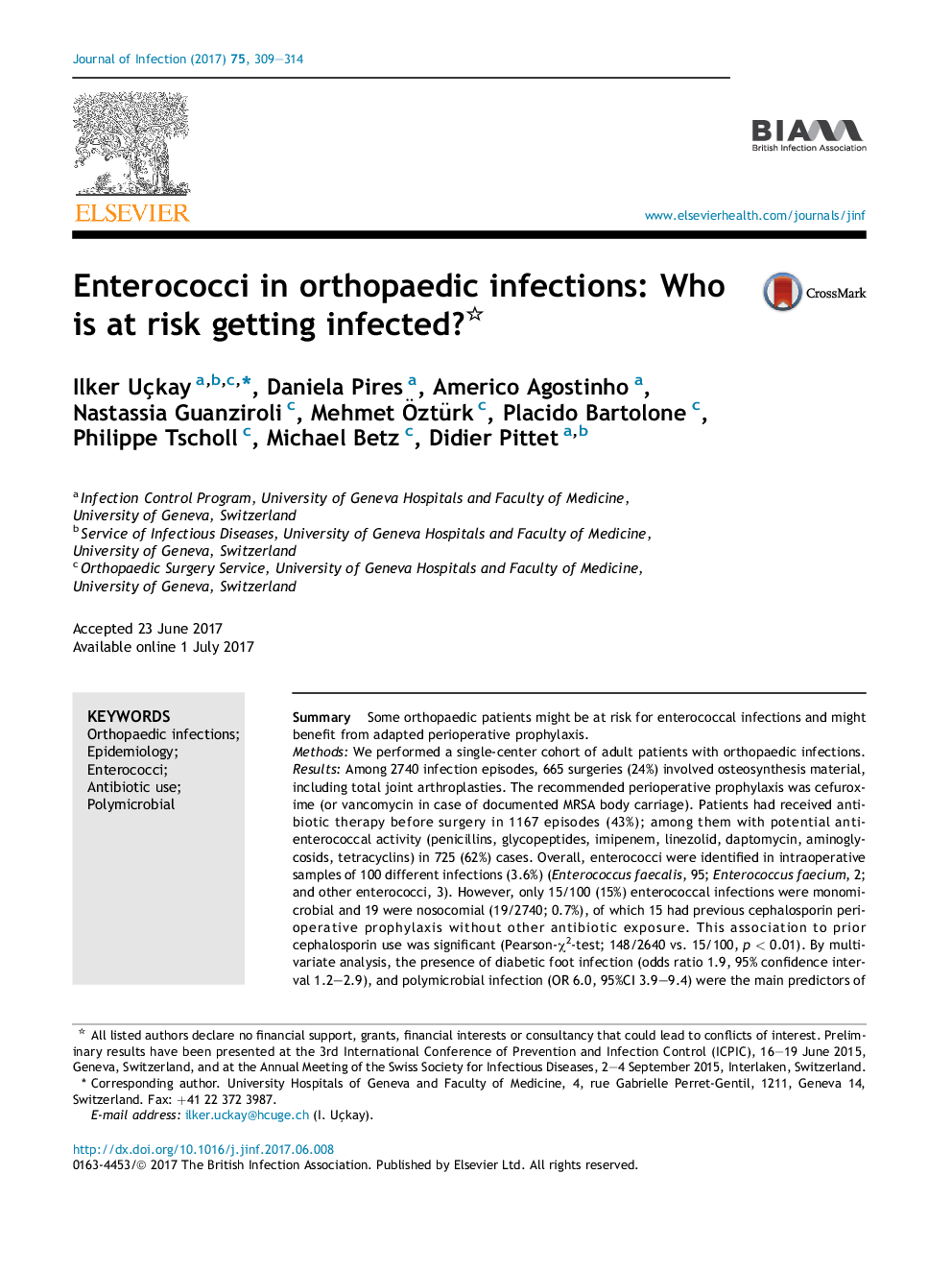| کد مقاله | کد نشریه | سال انتشار | مقاله انگلیسی | نسخه تمام متن |
|---|---|---|---|---|
| 5668577 | 1592415 | 2017 | 6 صفحه PDF | دانلود رایگان |

SummarySome orthopaedic patients might be at risk for enterococcal infections and might benefit from adapted perioperative prophylaxis.MethodsWe performed a single-center cohort of adult patients with orthopaedic infections.ResultsAmong 2740 infection episodes, 665 surgeries (24%) involved osteosynthesis material, including total joint arthroplasties. The recommended perioperative prophylaxis was cefuroxime (or vancomycin in case of documented MRSA body carriage). Patients had received antibiotic therapy before surgery in 1167 episodes (43%); among them with potential anti-enterococcal activity (penicillins, glycopeptides, imipenem, linezolid, daptomycin, aminoglycosids, tetracyclins) in 725 (62%) cases. Overall, enterococci were identified in intraoperative samples of 100 different infections (3.6%) (Enterococcus faecalis, 95; Enterococcus faecium, 2; and other enterococci, 3). However, only 15/100 (15%) enterococcal infections were monomicrobial and 19 were nosocomial (19/2740; 0.7%), of which 15 had previous cephalosporin perioperative prophylaxis without other antibiotic exposure. This association to prior cephalosporin use was significant (Pearson-Ï2-test; 148/2640 vs. 15/100, p < 0.01). By multivariate analysis, the presence of diabetic foot infection (odds ratio 1.9, 95% confidence interval 1.2-2.9), and polymicrobial infection (OR 6.0, 95%CI 3.9-9.4) were the main predictors of enterococcal infection, while sex, age, and type of material were not.ConclusionsCommunity-acquired or nosocomial enterococcal infections in orthopaedic surgery are mostly polymicrobial, rare and very seldom attributed to a nosocomial origin. Thus, even if they are formally associated with prior cephalosporin use, we do not see a rational for changing our antibiotic prophylaxis.
Journal: Journal of Infection - Volume 75, Issue 4, October 2017, Pages 309-314